There are many animals that can capture your attention underwater, even while strolling along the shore or exploring the rock pools formed by the tide. Humans—a curious species that loves to touch, examine, and experience the world primarily through their eyes—often don’t realize that their curiosity can have consequences.
When we have the privilege of observing this hidden world, we must show respect for all the living beings we encounter, whether while walking or swimming. That’s why it’s important to view marine creatures with grateful eyes, appreciating the opportunity to witness them in their natural habitat.
We are visitors in a world concealed from our usual senses, and it demands a curious mind to fully observe and appreciate nature’s marvels. I understand that there’s often a strong urge to touch that creature to satisfy our curiosity, to feel whether it’s slimy, hard, rough, or soft… We like to know what we have in front of us.

In today’s world, our natural curiosity has often been replaced by a desire to showcase experiences on social media. This trend, especially in recent years where seeing a photo can be an inspiration for others, has led people to imitate what they see online, often adopting behaviors that are not respectful of the life around us.
This phenomenon has turned certain species—those that are relatively easy to access and pose little threat to humans—into popular attractions. These creatures are not just exposed to our physical presence but are also subjected to the focus of countless cameras.
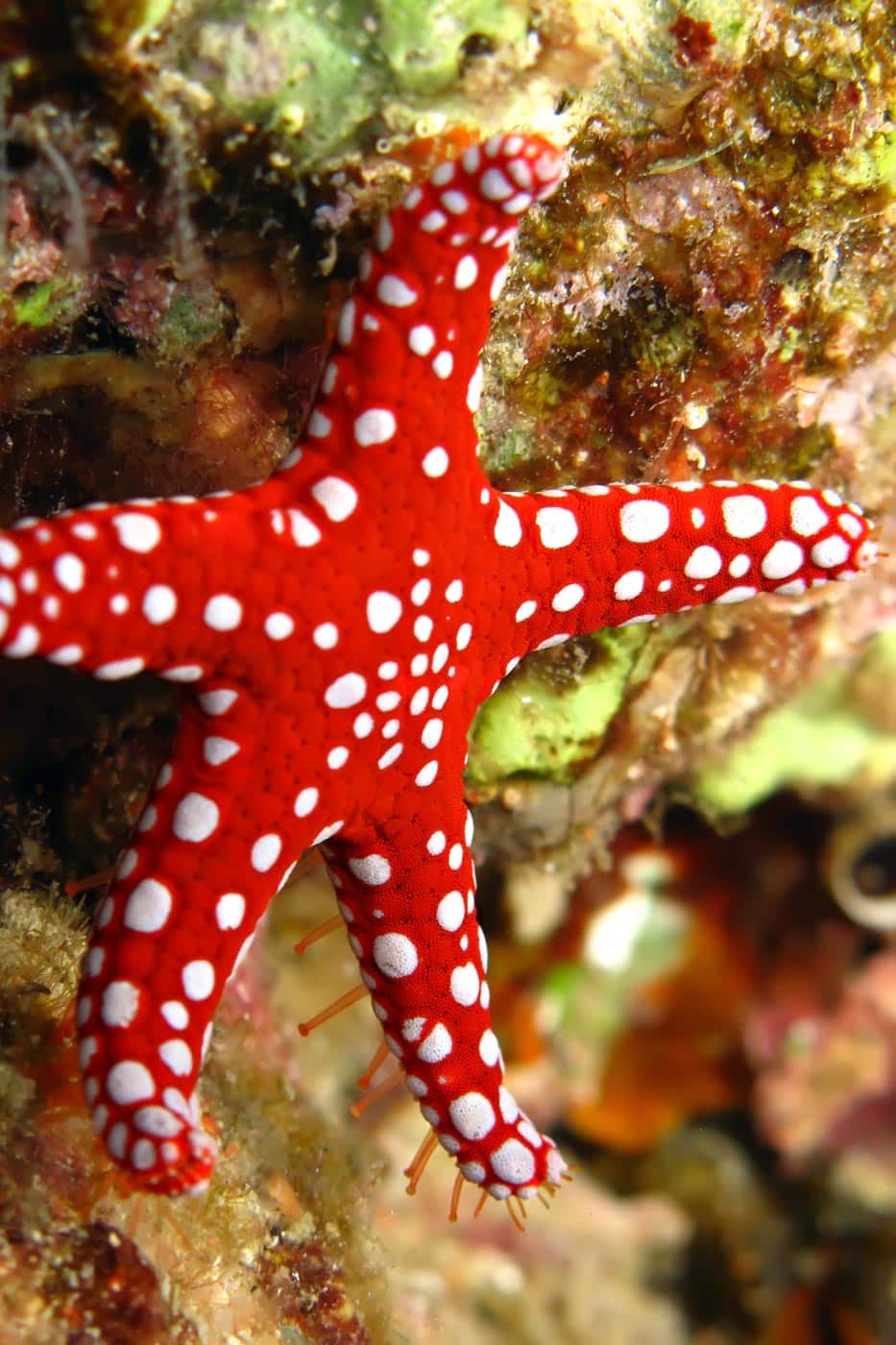
There are many great examples, but today I’m going to focus on the well-known starfish, which are commonly found along the Spanish coast.
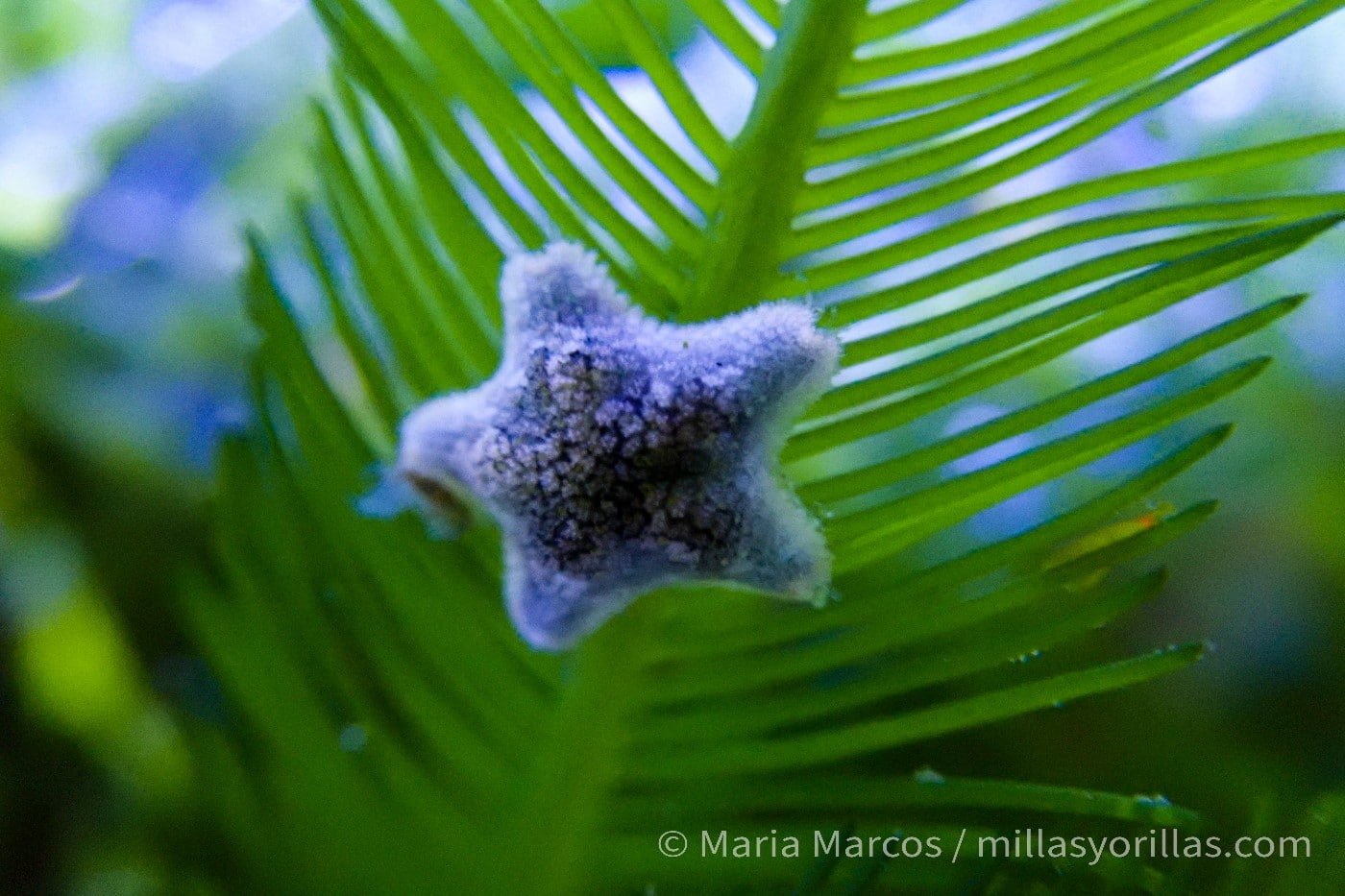
Their slow movement, firm structure, and harmless nature—despite their spiny appearance—have made them easy and appealing targets for handling.
Additionally, their vibrant colors, intricate patterns, and the striking size of some species make them perfect candidates for that coveted “star” photo.
Think about it. Just as you wouldn’t appreciate a giant hand descending from space to touch, move, flip you over, and shove you out of place, even if it lasted just a few seconds, starfish don’t enjoy it either.
This becomes even worse in popular tourist destinations, where the sheer number of people seeking the same photo can be overwhelming. These creatures aren’t just dealing with your hands but also with those of the hundreds who come after you.
Although starfish don’t have faces to express discomfort or sadness, they are living beings with nerve endings and all the essential functions of any animal.
While starfish are iconic, many people don’t know how fascinating these headless, eyeless, and heartless creatures truly are. They stand out in the animal kingdom for their pentaradial symmetry and their unique water vascular system—a network of internal channels that helps them move, cling to surfaces, and breathe.
Asteroids, as they are scientifically called, are recognizable by their flattened bodies, featuring a central disc from which five arms extend, though some species can have even more.
Starfish are covered by calcareous ossicles, which form a type of shield-like armor. This outer layer can be smooth, soft, spiny, or granular. The group’s scientific name, Echinodermata, means “spiny skin” in Latin, reflecting this feature.
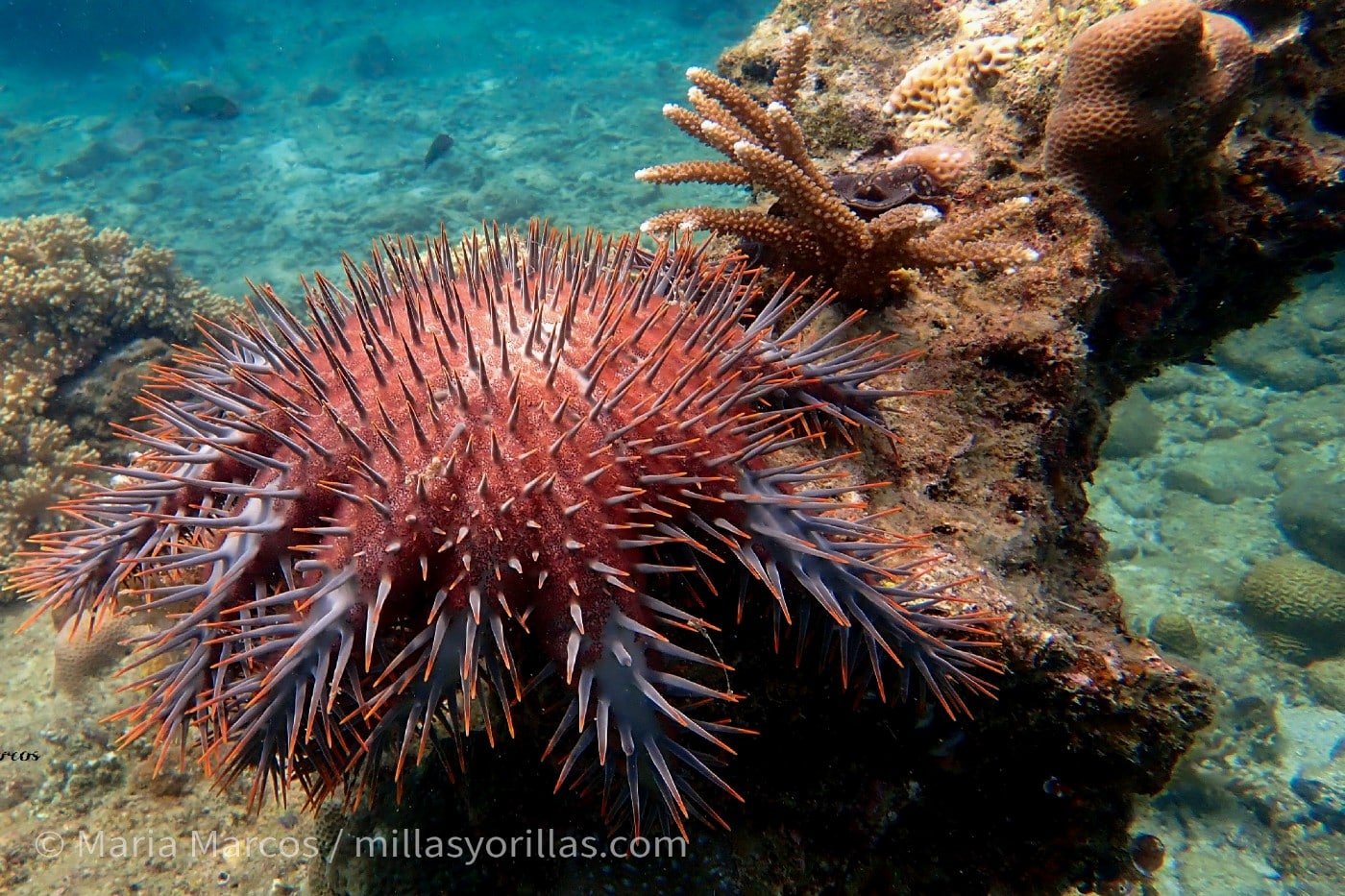
Starfish inhabit every ocean on the planet and thrive at varying depths—from the intertidal zones, where they are most vulnerable to human interference, to the deepest parts of the ocean.
Although their daily lives may seem disconnected from ours, their roles in marine ecology and biology are essential.
Starfish breathe in an entirely different way than humans. They absorb oxygen through their entire bodies and their tube feet, which also help them move. On the surface of their bodies, they have papules, or dermal gills, that allow them to take in dissolved oxygen from the water.
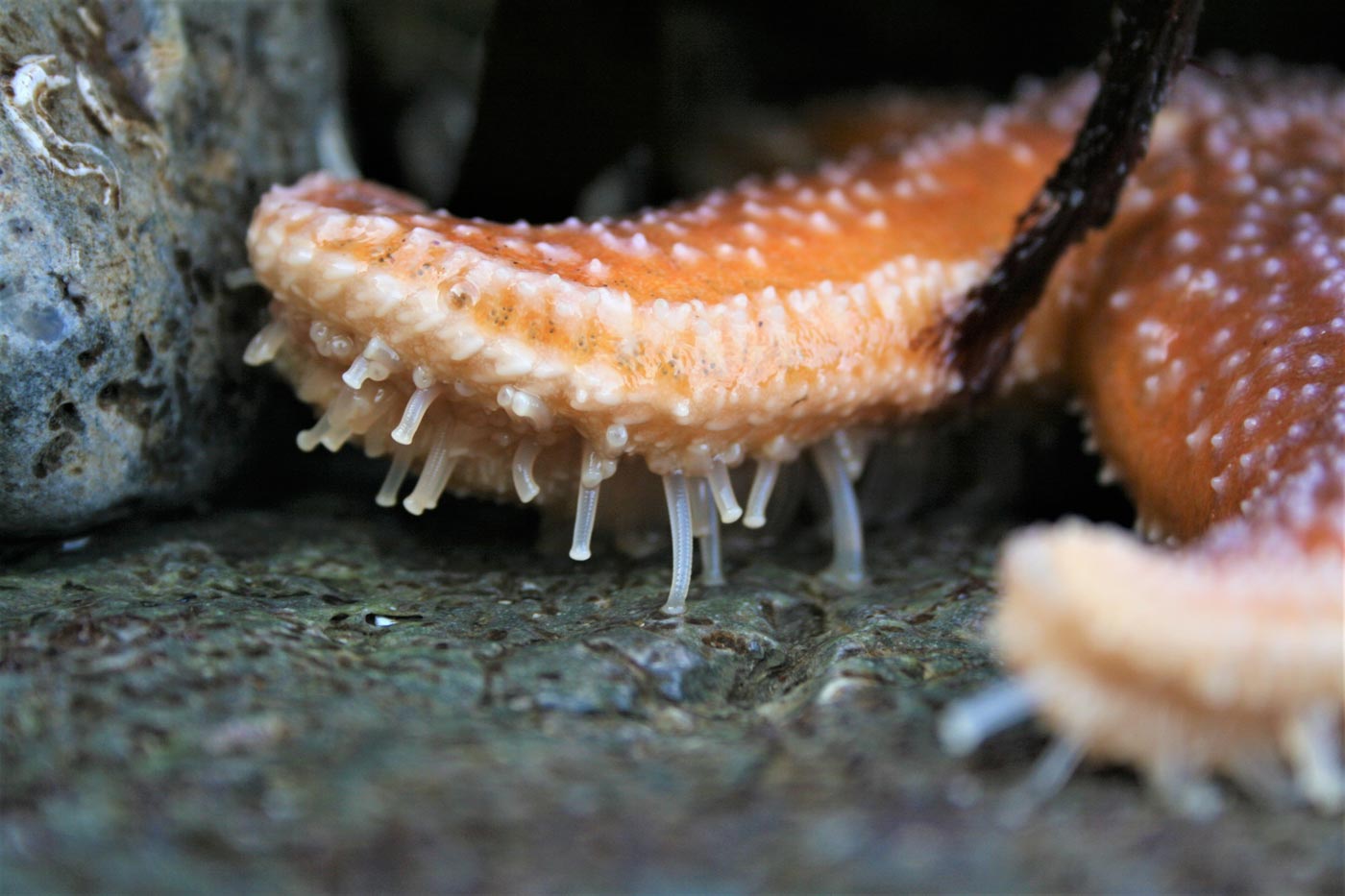
As they move, they distribute oxygen throughout their bodies. This delicate process highlights why it’s crucial to leave them in their aquatic environment and avoid handling them. Taking them out of the water can cause significant stress and disrupt their natural functions.
While some starfish may be resilient and able to endure handling, others may be more fragile. Continuous human interaction—especially when they’re touched by many people—can overwhelm their regulatory systems, causing them shock and potentially harming their bodies.
We often like to compare the living organisms we encounter with one another. That’s why it surprises us to learn that starfish lack a central brain. Instead, their “brain” is distributed throughout their body.
They possess a highly complex nervous system, which coordinates an intricate network of nerves located just beneath their skin. These nerves are essential for managing their sense of balance and navigation, making starfish extremely sensitive to touch.
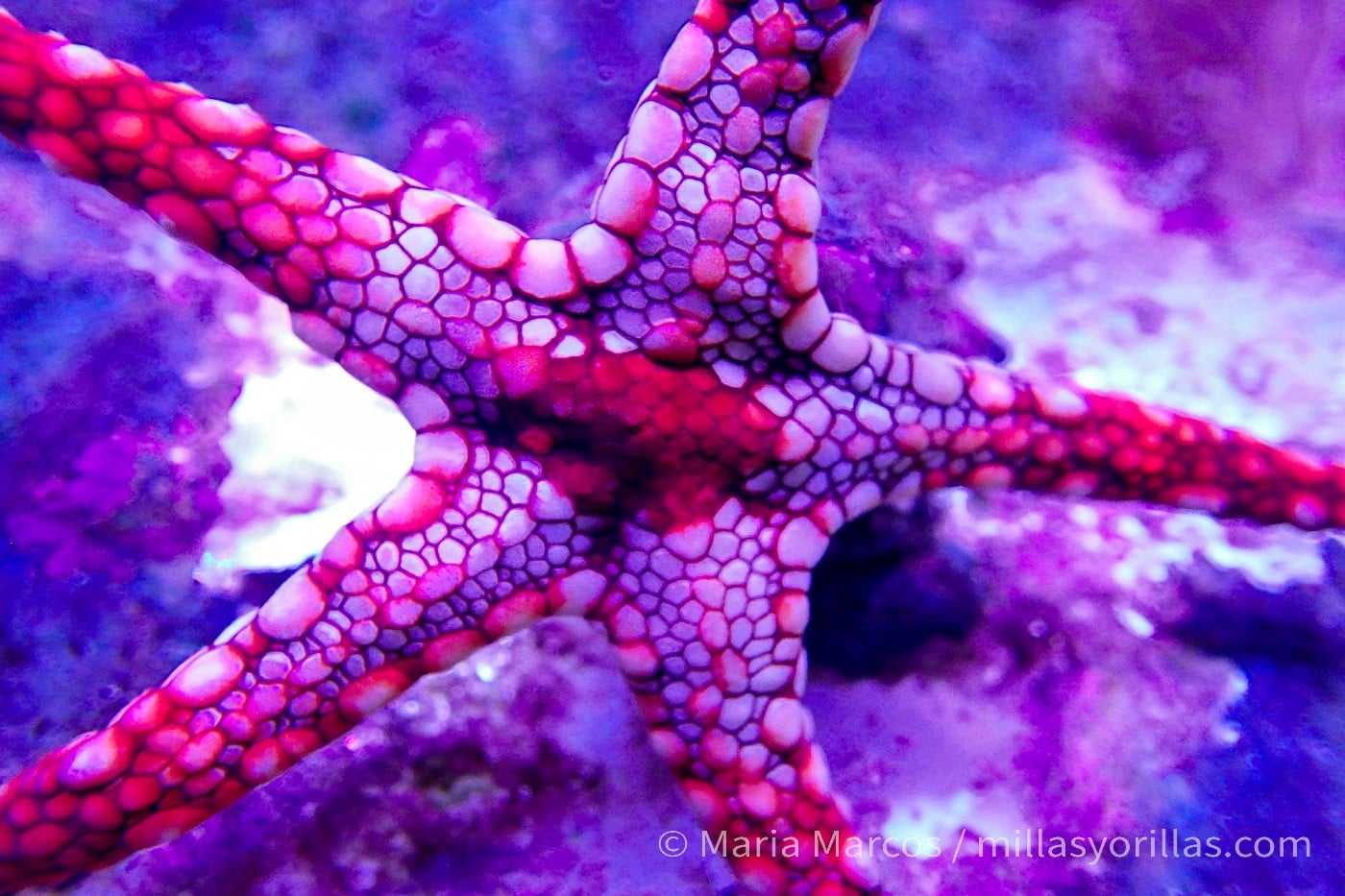
Starfish are also sensitive to light, thanks to a kind of ocelli located at the tips of their arms. In essence, their “eyes” are at the ends of each arm. Some species even have individual photoreceptor cells distributed across their bodies.
They can sense temperature, orientation, and the condition of the surrounding waters, all of which serve as external stimuli. Another fascinating feature is their tube feet, located along their arms, which allow them to detect chemical substances. This ability functions as their sense of smell, helping them locate food.
This is a very interesting question, as they have a unique movement system. They use translucent feet that end in a kind of blister. When filled with water, these blisters make contact with the substrate and move like a 4×4 traction system. They secrete adhesive chemicals that allow them to hold on, and other chemicals that help them detach.
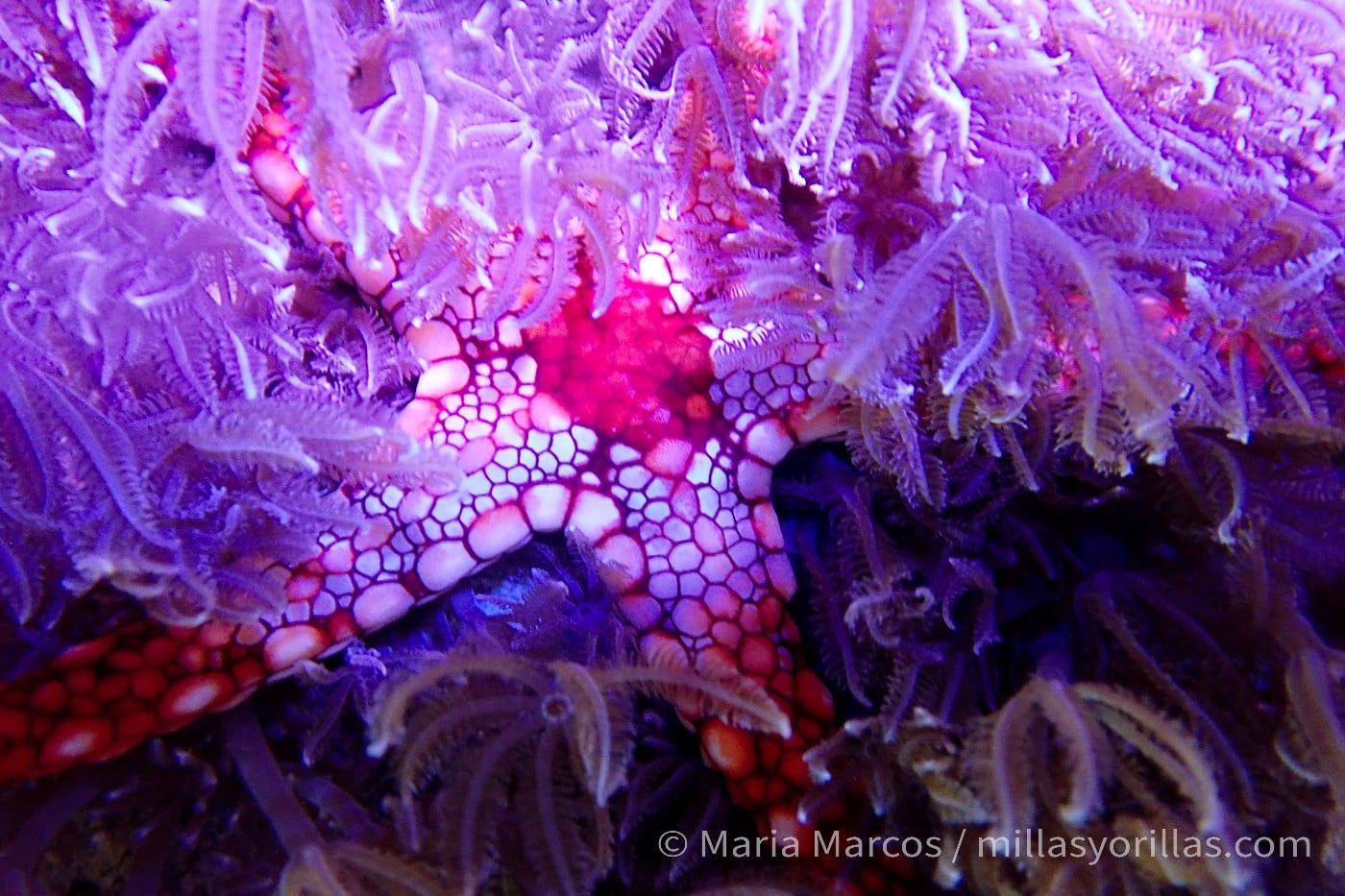
By removing them from the water, you put their entire internal system on alert. They will try to stay attached to their substrate, which causes them to produce more chemicals to adhere to the surface, leading to unnecessary energy expenditure.
We consider ourselves a clean and tidy species, but unknowingly, a lot of bacteria and oils accumulate on our hands that can be harmful to other species. This often affects marine creatures, who find contact with us not only stressful but also potentially harmful.
If we add the chemicals found in sunscreen (discussed in the article Protecting Ourselves at the Expense of Marine Life), it becomes clear that our presence doesn’t benefit them at all.
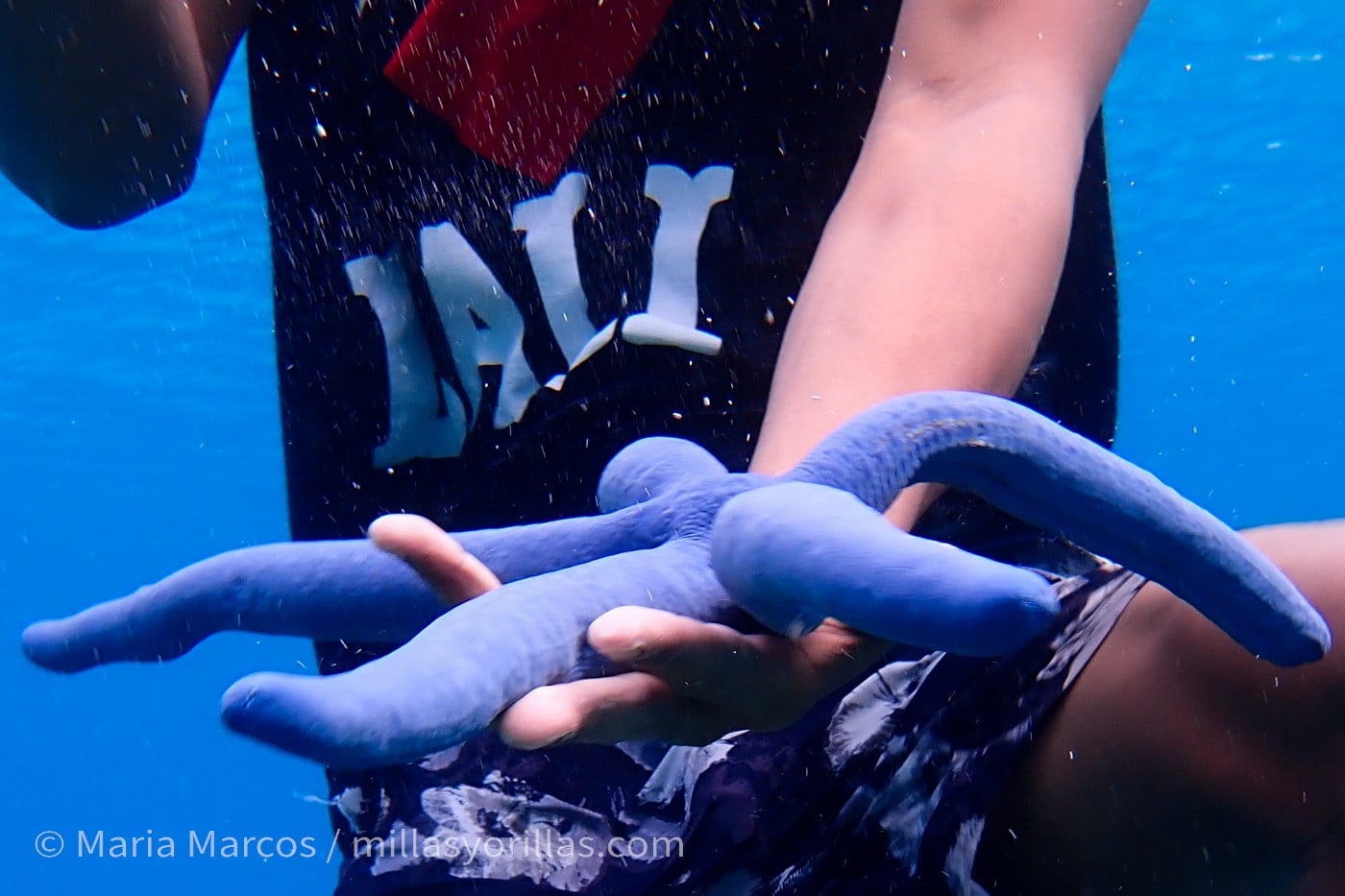
Sometimes, even when we handle them gently—whether out of fear or concern—we can accidentally harm them. When we remove them from their substrate, we pull them upwards. Often, we don’t control the force, which can cause them to break.
It’s true that starfish can regenerate a severed arm. This remarkable ability is one of the evolutionary wonders of these creatures. However, this doesn’t justify experimenting with them, as regeneration requires a significant amount of energy and effort. This energy expenditure can limit other vital functions, making it harder for them to survive. Additionally, during the regeneration process, they become highly vulnerable to infections.
Regeneration times vary by species. For some, it takes months, while for others, it can take years. During this time, the severed arm relies on stored nutrients until a new mouth regenerates, allowing it to feed. However, some species cannot regenerate at all without a small portion of the central disk.
Starfish can intentionally fragment their bodies to escape predators. This process involves rapid softening of connective tissue following a nerve signal, allowing them to detach part of their body.
At first glance, you can’t tell if a starfish is male or female. Some species are hermaphroditic, and certain starfish begin life as males but transform into females as they grow.
I’ll give you another reason why you shouldn’t remove them from the water: some starfish incubate their eggs by shielding the clutch with their bodies. You can recognize this behavior by observing a raised central disk, often in a hunched posture. If you remove a starfish from its substrate during incubation, I think you can imagine what this means.
When you see a large group of starfish gathered, they may be preparing to spawn. They often congregate and engage in behaviors like males climbing onto females. Using chemical signals, they synchronize the optimal time and conditions for reproduction, such as the correct tide length or time of day.

When you encounter such an authentic living being, consider taking a photo from a respectful distance. Capture a composite image of the starfish and its natural seabed habitat. This way, you can immerse yourself in that moment with just a glance.
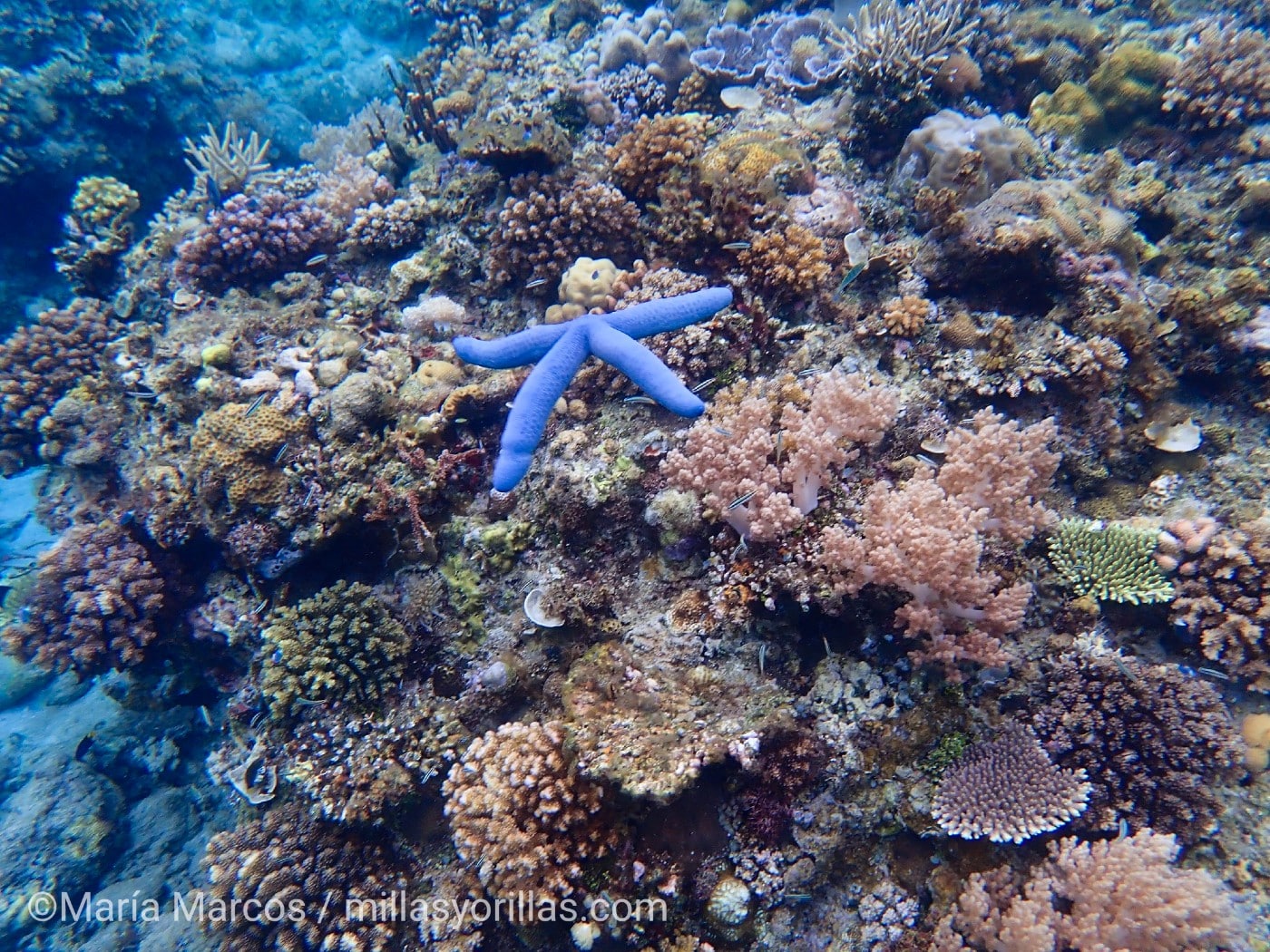
You can also ask someone to take a photo of you diving nearby, but avoid moving or lifting the starfish, and definitely do not remove it from the water.
Each of us has the power to inspire others. Let’s use that power to promote respect for life—all forms of life. Supporting or “liking” photos of people who mishandle marine life encourages similar behaviors and can indirectly fund companies that exploit nature and bring tourists to these areas in harmful ways.
If you happen to find starfish during a walk between the tides, try to encourage those who are with you to observe them and be curious about them, but always from a distance and with respect.